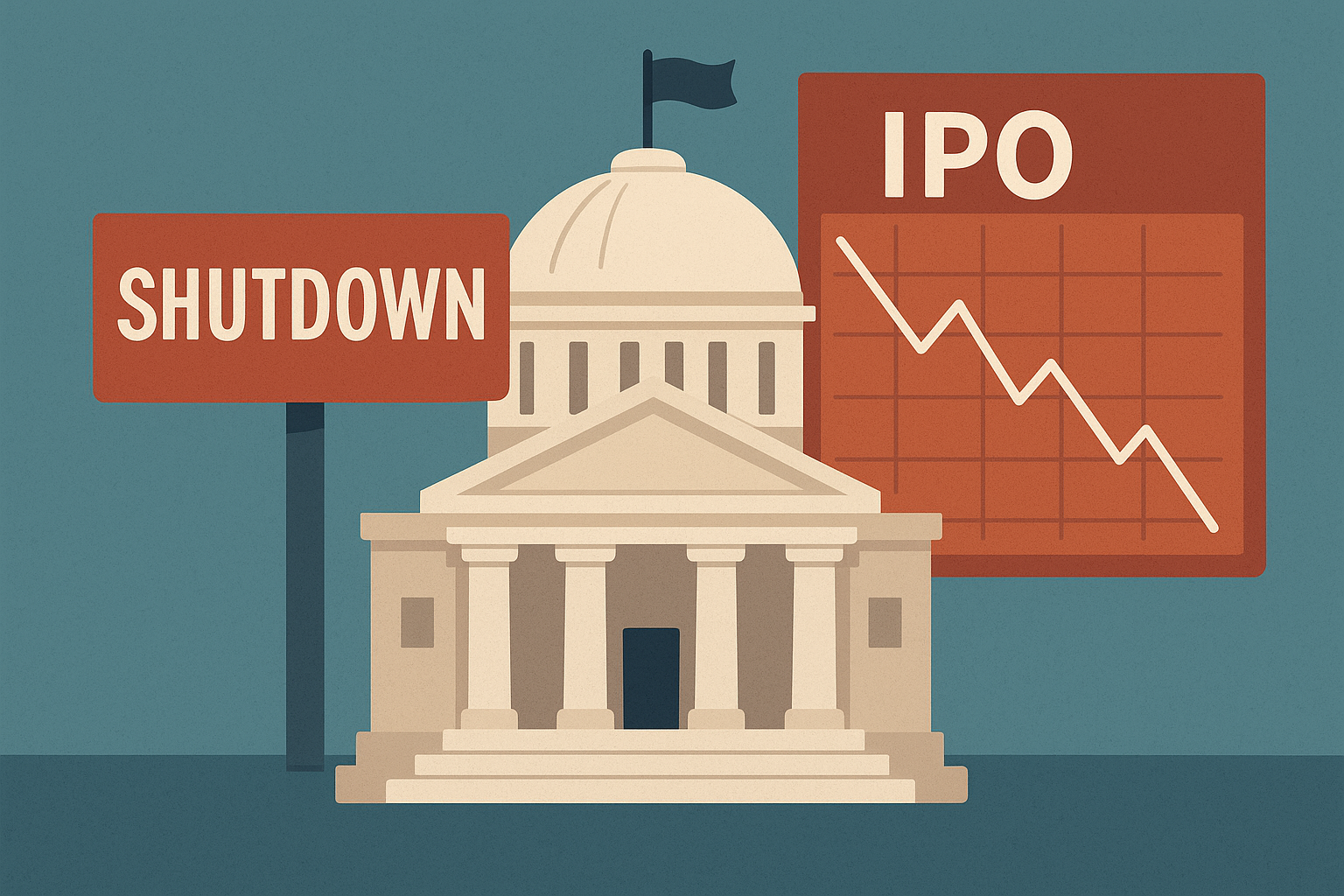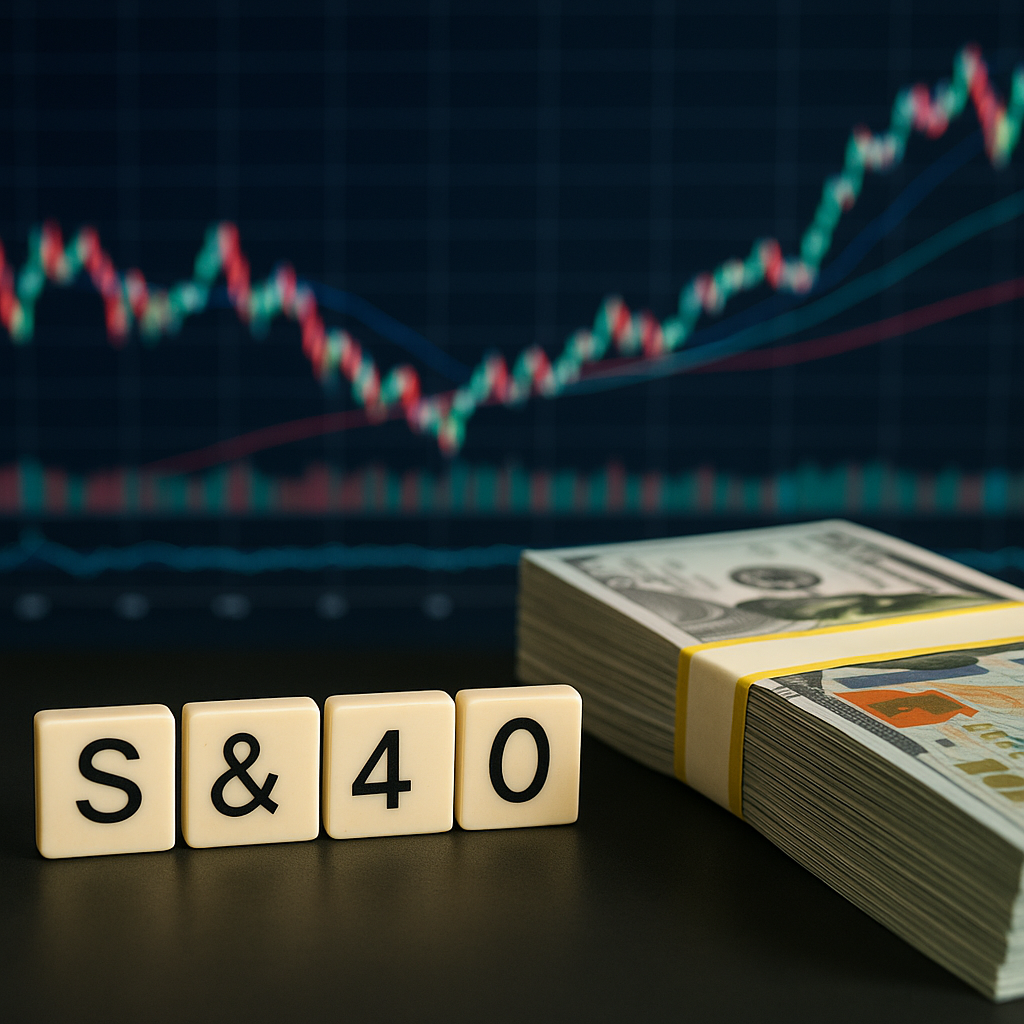The long-awaited revival of U.S. initial public offerings (IPOs) is colliding head-on with Washington’s latest budget standoff. As of October 1, 2025, the federal government has entered a shutdown, impairing the Securities and Exchange Commission’s (SEC) ability to review and approve new listings. For investors who have been eyeing the pipeline of fresh equity offerings, the timing could hardly be worse.
IPO Momentum Meets Political Gridlock
After a prolonged drought in public offerings during 2022–2023, the IPO market roared back to life this year. According to data from Reuters, companies raised $52.94 billion across 263 IPOs in the first nine months of 2025, marking the strongest issuance since the tech-fueled surge of 2021.
Heavyweights in technology, biotech, and consumer sectors were lining up for listings in the fourth quarter, buoyed by a resilient equity market and renewed investor risk appetite. But the shutdown has thrown an unexpected wrench into the process. With the SEC operating under constrained capacity, approvals for IPO filings and amendments are effectively on hold.
As Investing.com highlighted, even a short shutdown could delay dozens of deals; a protracted impasse could push some issuers to shelve offerings altogether. For companies with seasonal revenue cycles or critical funding needs, timing is everything—meaning missed windows could translate into higher financing costs or lost opportunities.
Why This Matters for Investors
The IPO market is not just about new tickers hitting the exchange—it plays a broader role in signaling risk appetite and providing liquidity to both startups and early investors. Investment banks, law firms, and exchanges depend on a healthy flow of deals, while institutional and retail investors look to IPOs for exposure to new growth stories.
A slowdown or halt in IPO issuance reverberates across multiple corners of the market:
- Investment Banks & Advisors: Underwriting fees, advisory revenues, and deal activity could fall sharply. Shares of bulge-bracket firms like Goldman Sachs, Morgan Stanley, and JPMorgan often track IPO volumes.
- Exchanges & Infrastructure: Nasdaq and NYSE, which benefit from listing fees and trading volume, may face reduced activity.
- Venture & Private Equity Exits: Delays in public listings prolong exit timelines, impacting fund liquidity and valuations.
- Investor Sentiment: A weak IPO market often signals risk aversion, which can spill into broader equity valuations.
As Bloomberg noted in a similar 2019 shutdown episode, IPO pipelines can take weeks to normalize even after the government reopens, compounding the drag on market activity.
Future Trends to Watch
Several dynamics will shape how this standoff affects capital markets in the weeks ahead:
- Duration of the Shutdown: A short disruption may simply delay filings by days, but a multi-week or multi-month closure could wipe out the rest of the 2025 IPO calendar.
- Market Volatility: With uncertainty already weighing on stock futures, prolonged gridlock could depress equity valuations, making it harder for IPOs to price attractively.
- Alternative Financing: Companies unable to access public markets may turn to private placements, convertible debt, or strategic partnerships to bridge funding gaps.
- Global Competition: If U.S. markets stall, international exchanges—from Hong Kong to London—may position themselves as alternatives for companies seeking capital.
Key Investment Insight
For investors, the immediate concern is timing risk. IPOs scheduled for Q4 may slip into 2026, compressing supply and potentially creating a backlog of high-demand deals once the government reopens. In the short term, this could boost secondary market performance of recently listed companies, as supply remains constrained.
Investors should closely monitor:
- The pace of negotiations in Congress and likelihood of a near-term resolution.
- Capital market-sensitive stocks, including exchanges, investment banks, and IPO-heavy ETFs.
- Defensive plays, such as gold and Treasuries, which have already shown strength as safe havens amid political turmoil.
Key Takeaways
The U.S. government shutdown has injected a fresh dose of uncertainty into an IPO market that had finally regained momentum. For investors, this episode underscores the delicate balance between market cycles and political dysfunction. While the long-term outlook for U.S. capital markets remains intact, the near-term risks of deal delays, volatility, and shifting investor sentiment are real.
Staying agile—by tracking sector exposure, hedging volatility, and watching for opportunities in secondary markets—will be critical in navigating this environment.
For daily insights on market-moving trends and investor strategies, keep following MoneyNews.Today as your trusted source for financial intelligence.





